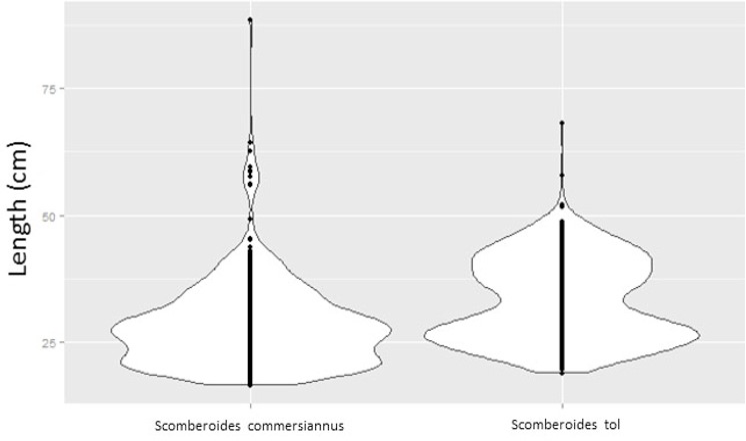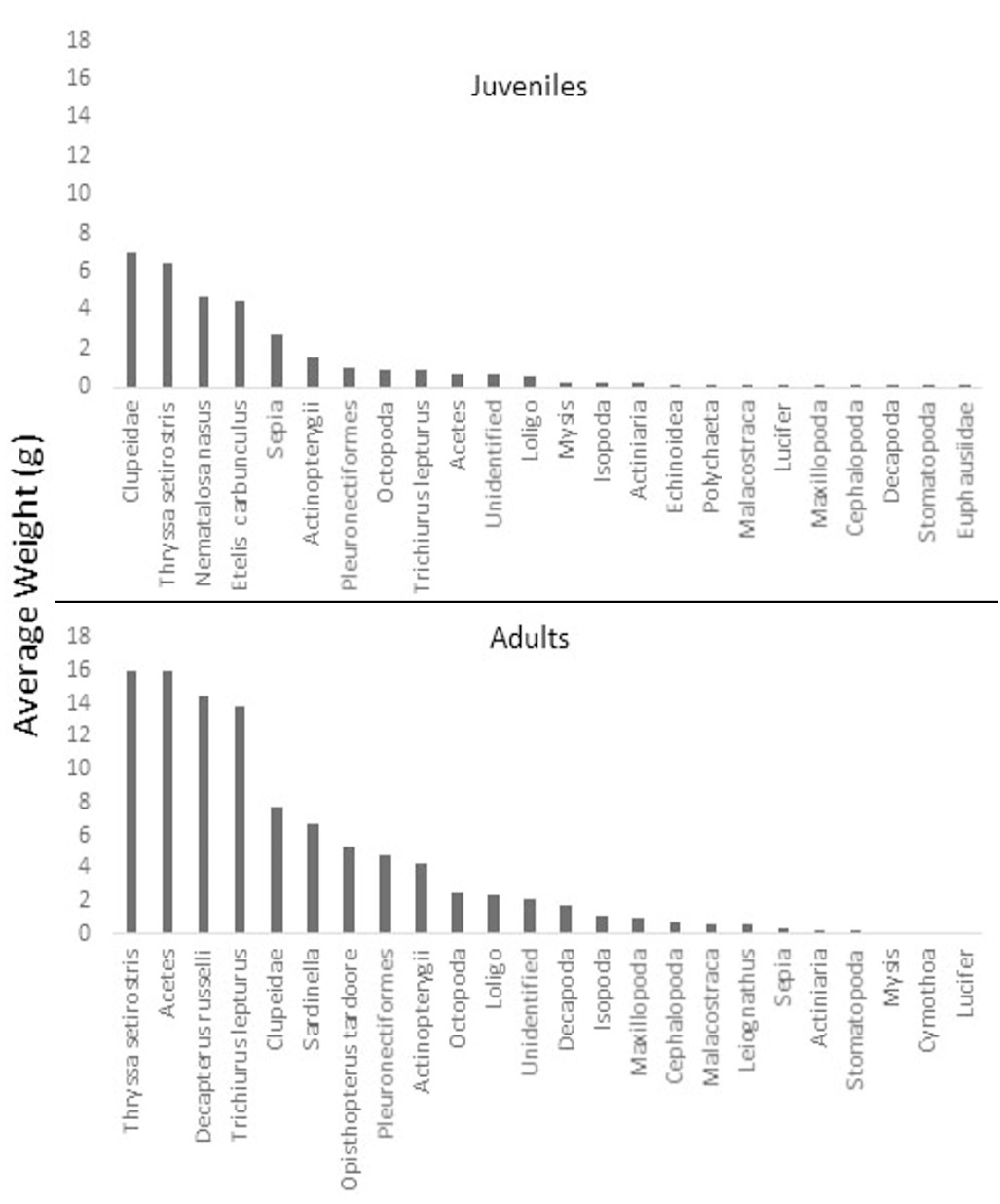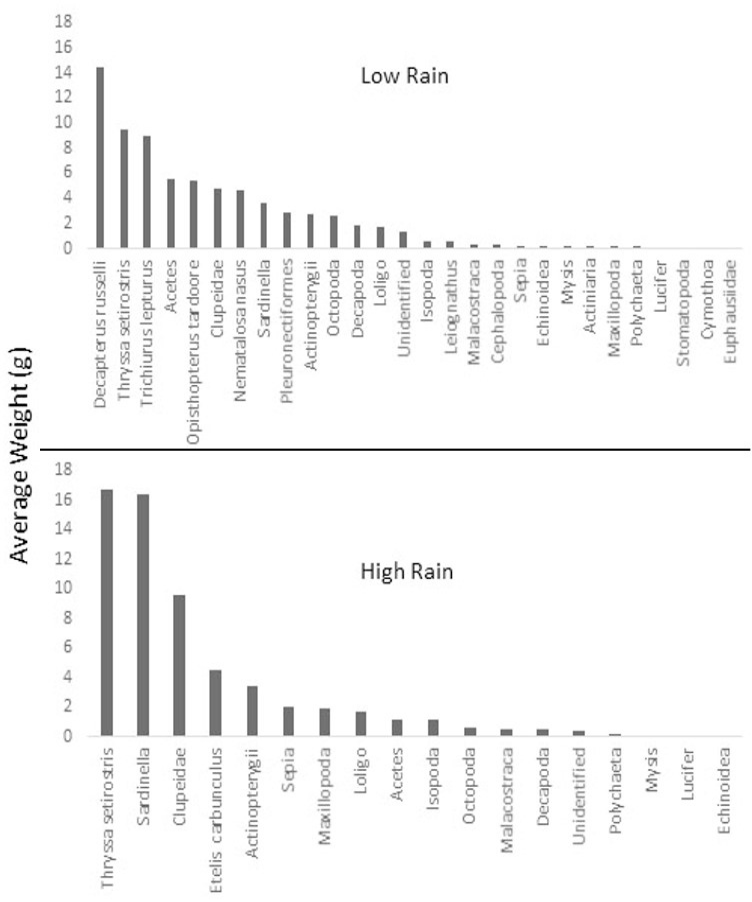Feeding Patterns of Two Commercially Important Fish Species Scomberoides commersonnianus and S. tol in the Northern Arabian Sea Coast of Pakistan
Feeding Patterns of Two Commercially Important Fish Species Scomberoides commersonnianus and S. tol in the Northern Arabian Sea Coast of Pakistan
Nazia Qamar1, Sher Khan Panhwar1,* and Ralf Riedel2,*
Study area of feeding patterns of Scomberoides commersiannus and S. tol. Shaded area along coast indicates location of commercial fishing grounds.
Violin plot of length distribution of Scomberoides commersoniannus and S. tol sampled along the Pakistani coast.
Average weight of prey items in stomach of juvenile and adult Scomberoides commersoniannus and S. tol sampled from landings in Pakistan between July 2013 and June 2014; data pooled for species.
Average weight of prey items in stomach of Scomberoides commersoniannus and S. tol sampled from landings in Pakistan between July 2013 and June 2014.
Average weight of prey items in stomach of Scomberoides commersoniannus and S. tol by season (rainy and dry) sampled from landings in Pakistan between July 2013 and June 2014; data pooled for species.
Receiver operating characteristic plot indicating performance of binomial logistic regression of stomach emptiness on species, gender, life stage and weather for Scomberoides commersoniannus and S. tol sampled from landings in Pakistan between July 2013 and June 2014.
Study area of feeding patterns of Scomberoides commersiannus and S. tol. Shaded area along coast indicates location of commercial fishing grounds.
















